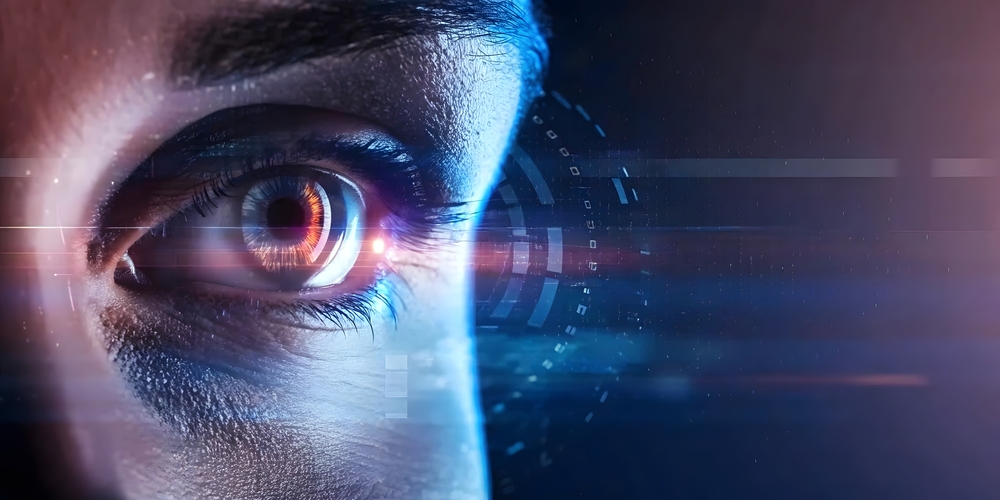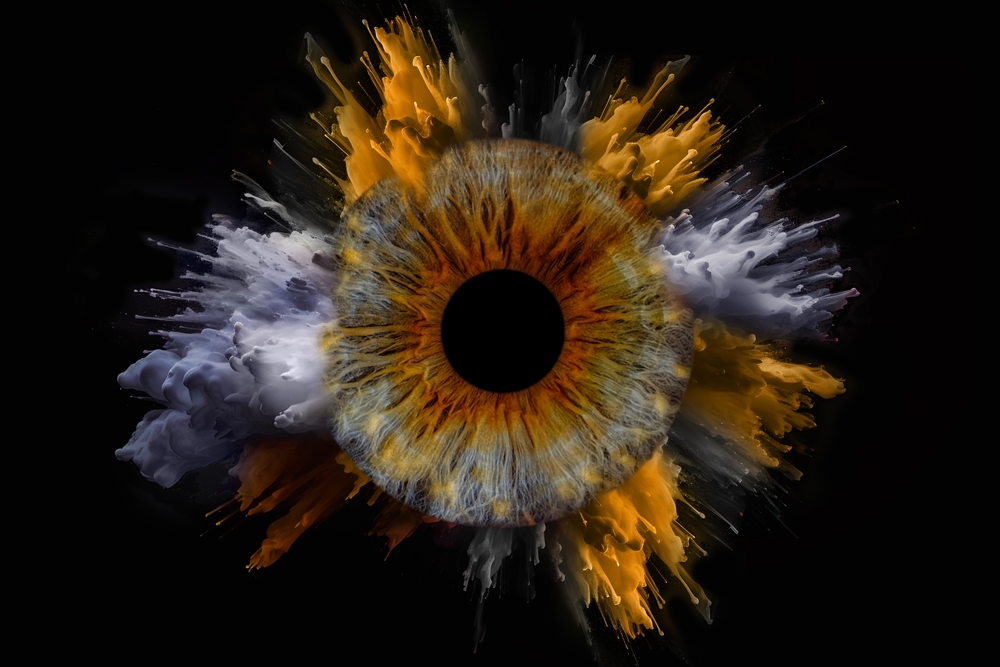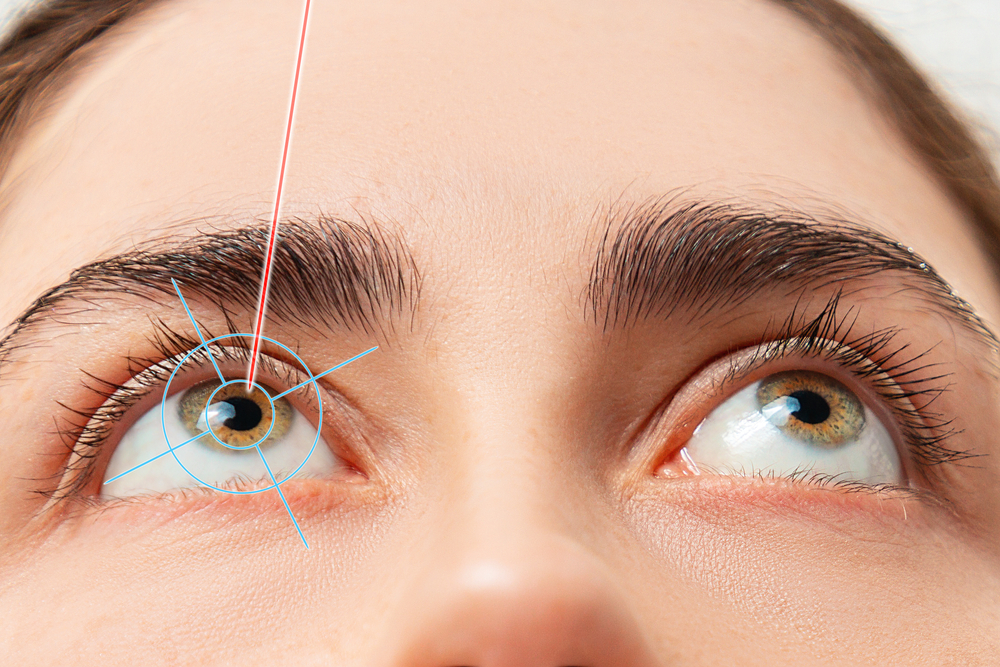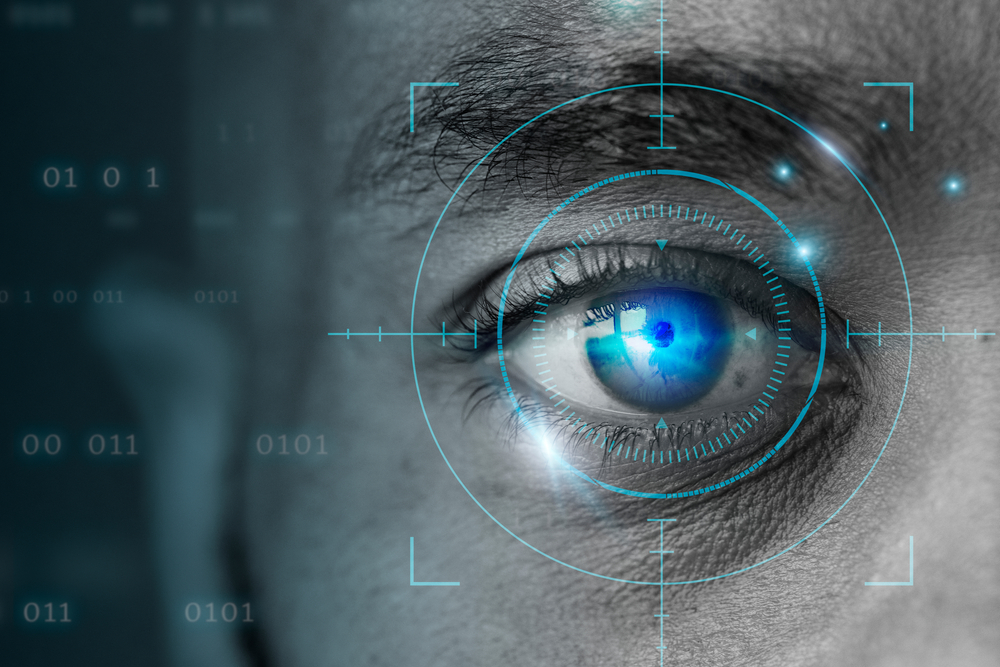Breakthrough Metallic Nanoparticle Retinal Implant Offers New Hope for Restoring Vision

Imagine waking up one day and realizing that your world, once dark, now shimmers with light. The edges of shapes return. The colors dance again. Then, something even stranger happens. You begin to see what no human eye was ever meant to see: light beyond the visible spectrum. This moment is no longer the stuff of science fiction. It is the reality being shaped in laboratories today, where researchers have created a retinal prosthesis woven from nanowires so fine that a hundred could fit across the width of a human hair. This device not only restores sight to the blind but also expands it, giving primates the ability to see in near-infrared, a wavelength that exists beyond the red end of the spectrum and is invisible to natural human eyes.
The study, led by researcher Shuiyuan Wang and colleagues, challenges our understanding of vision, technology, and the limits of human potential. It represents one of the most profound intersections of biology and engineering we have ever witnessed, suggesting that our species may be entering an era in which blindness can be reversed and the boundaries of human perception expanded.
This technology also represents a deep philosophical question about what it means to experience sight itself. Vision has always been a metaphor for awareness, understanding, and enlightenment. When we alter how we see the world, we also alter how we think about it. With this new kind of retinal prosthesis, humanity may be approaching an age when physical and cognitive expansion are no longer separate, but part of the same process of evolution.
Very excited that the clinical trial results for our PRIMA retinal prosthesis are published today in the New England Journal of Medicine! This is the first time that patients who are blind due to photoreceptor loss have been able to intuitively see again. pic.twitter.com/HIZ6IqmNie
— Max Hodak (@maxhodak_) October 20, 2025
The Science of Seeing Again
The retina is a delicate layer of light-sensitive cells that sits at the back of the eye. When these cells are damaged or die, whether through genetics, injury, or disease, blindness follows. For decades, scientists have attempted to restore that connection between the eye and the brain by using artificial retinas and other forms of prosthetics. Many of these efforts have been groundbreaking but limited, plagued by poor resolution, electrical interference, or lack of long-term stability once implanted in the human body.
Then came the tellurium nanowires, tiny crystalline structures made from a light-sensitive element that doubles as a semiconductor. The research team interlaced these nanowires into a lattice network, creating a prosthesis that not only mimics the retina’s natural structure but also functions as a responsive and efficient interface between light and neural tissue. When implanted into blind mice, this nanowire retina converted both visible and near-infrared light into electrical signals that traveled along the optic nerve into the brain’s visual cortex, where images and shapes begin to take form.
The results were astonishing. The mice did not just respond to flashes of light; they demonstrated pattern recognition, navigated mazes, and displayed almost normal behavioral vision. While the restoration was not perfect, it was undeniably sight regained. It proved that light could once again find its way into the brain through a pathway rebuilt by human hands.
The implications extend far beyond the laboratory. Every discovery like this shifts the balance between what we once thought was possible and what we can actually achieve. In restoring sight to blind mice, the researchers did more than prove a hypothesis; they showed that the gap between organic biology and synthetic materials can be bridged with compassion and intelligence. It suggests that the barriers between human senses and technology are not as rigid as they once seemed.

Beyond Human Vision: Seeing the Invisible
In another phase of the study, sighted macaques received the same prosthesis. What followed was a revelation. Their eyes began to detect and respond to near-infrared light, a wavelength just beyond red that exists all around us but remains hidden from natural human sight. For the first time, a biological system enhanced with technology was able to extend the limits of its perception.
For humans, this could open extraordinary possibilities. Imagine walking through a darkened room and perceiving movement and shapes invisible to everyone else. Imagine surgeons performing complex operations with natural infrared awareness, or firefighters navigating smoke-filled buildings without the need for night vision goggles. The implications stretch far beyond restoration; they point to a future of evolution guided by curiosity and human ingenuity.
This is not merely enhancement for its own sake. It represents the merging of healing and evolution, a fusion of biology and technology where what was once considered science fiction becomes the next step in human experience.
If we learn to perceive light that was once invisible, we may also learn to see new connections within ourselves and the world. The ability to sense the unseen could transform not just how we act but how we empathize. By perceiving more of the natural world, we gain a greater appreciation for the energy, warmth, and movement that connects all living things.

Safe, Biocompatible, and Hopeful
According to Neuroscience News and the research team, the prosthesis showed no adverse effects in primates. The implant integrated naturally with the surrounding tissue, causing no inflammation or rejection. This is significant because many artificial vision systems fail not from design flaws, but from the body’s rejection of foreign materials. The nanowire lattice, however, appears to coexist harmoniously with living tissue, forming a bridge between the biological and the synthetic.
This development marks a crucial turning point. It shows that the future of artificial vision is not only possible but also safe, sustainable, and humane. As neuroengineer Eduardo Fernández noted in a related commentary, “The long-term success of these technologies depends on developing cost-effective solutions and ensuring their availability to a broader range of patients.” His words highlight a deeper challenge: scientific miracles are only as powerful as their accessibility. The next step will be to take this technology from laboratory success to life-changing therapy for millions living with blindness worldwide.
The sense of safety and biocompatibility is what truly makes this innovation stand out. By showing that nanomaterials can exist peacefully within biological systems, scientists have opened the door to countless future applications, not just in ophthalmology but in all areas of neural interface research. This may one day allow seamless integration between the human brain and devices that help heal, enhance, and evolve our sensory experiences.

A Step Toward Post-Biological Evolution
What happens when humans begin to see beyond their biology? The question has haunted both scientists and philosophers for decades. The idea of sensory augmentation has always carried a strange duality, promising both enlightenment and danger. Yet this breakthrough blurs the line between imagination and reality. Humanity is not replacing nature but collaborating with it, extending its own senses through careful, compassionate innovation.
Infrared vision could change how we interact with our environment. It could help drivers detect pedestrians in the dark, assist soldiers in low-visibility conditions, and allow environmental researchers to track nocturnal animals without disturbing them. The practical uses are vast, but beyond utility lies a deeper philosophical question: what does it mean to see more than we were designed to? Every new sense reshapes how we understand the world and ourselves. Just as the telescope expanded our view of the cosmos and the microscope revealed the hidden worlds within our own cells, this implant could redefine the boundaries of perception itself. For the first time, we may be able to witness the subtle glow of heat, energy, and life that fills the space around us.
As our perception extends beyond the visible spectrum, our understanding of reality will evolve as well. We might begin to recognize the interwoven systems that sustain life on Earth in ways previously invisible to the human eye. By expanding sensory boundaries, technology also expands empathy, allowing us to see ourselves as active participants in a wider, interconnected web of existence.

Lessons from the Lab: From Blindness to Brilliance
Behind every major scientific discovery lies a story of patience, persistence, and vision. Restoring sight to the blind is not only a scientific pursuit; it is an act of profound empathy. It forces us to ask whether we are using our intelligence to heal rather than to harm. Today, blindness affects tens of millions of people worldwide. Many forms, such as retinitis pigmentosa and macular degeneration, have no cure. For these individuals, even a partial restoration of vision can transform lives by returning independence, dignity, and hope.
This is why the work being done with the nanowire retinal implant feels so monumental. It goes beyond mere function and into the realm of meaning. When technology can give back one of our most precious senses, it reaffirms what science at its best stands for: the relentless pursuit of understanding and compassion. It is a reminder that progress is not about moving faster, but about moving closer to one another, building tools that restore our shared humanity.
Every experiment that brings light back to the blind also brings insight back to the rest of us. It challenges the idea of limitation and reminds us that hope is a kind of light, too. The more we explore ways to heal, the more we discover that the true purpose of science is not simply invention, but restoration — of sight, of spirit, and of possibility.

The Human Heart of a Machine Vision
There is something deeply poetic in the idea that a machine can help us reclaim what we have lost and even offer something greater. But technology is never the ultimate goal. The real objective is understanding of ourselves, our limitations, and our endless potential. When I picture those nanowires, these invisible threads of light and electricity weaving sight out of darkness, I see more than scientific triumph. I see human resilience embodied in material form. We are a species built to adapt, to rise, and to innovate. When nature closes a door, we do not surrender to the dark; we learn how to build a window.
Every great leap forward begins in curiosity and compassion. Someone, somewhere, had to ask not just “Can we do this?”
Loading...

